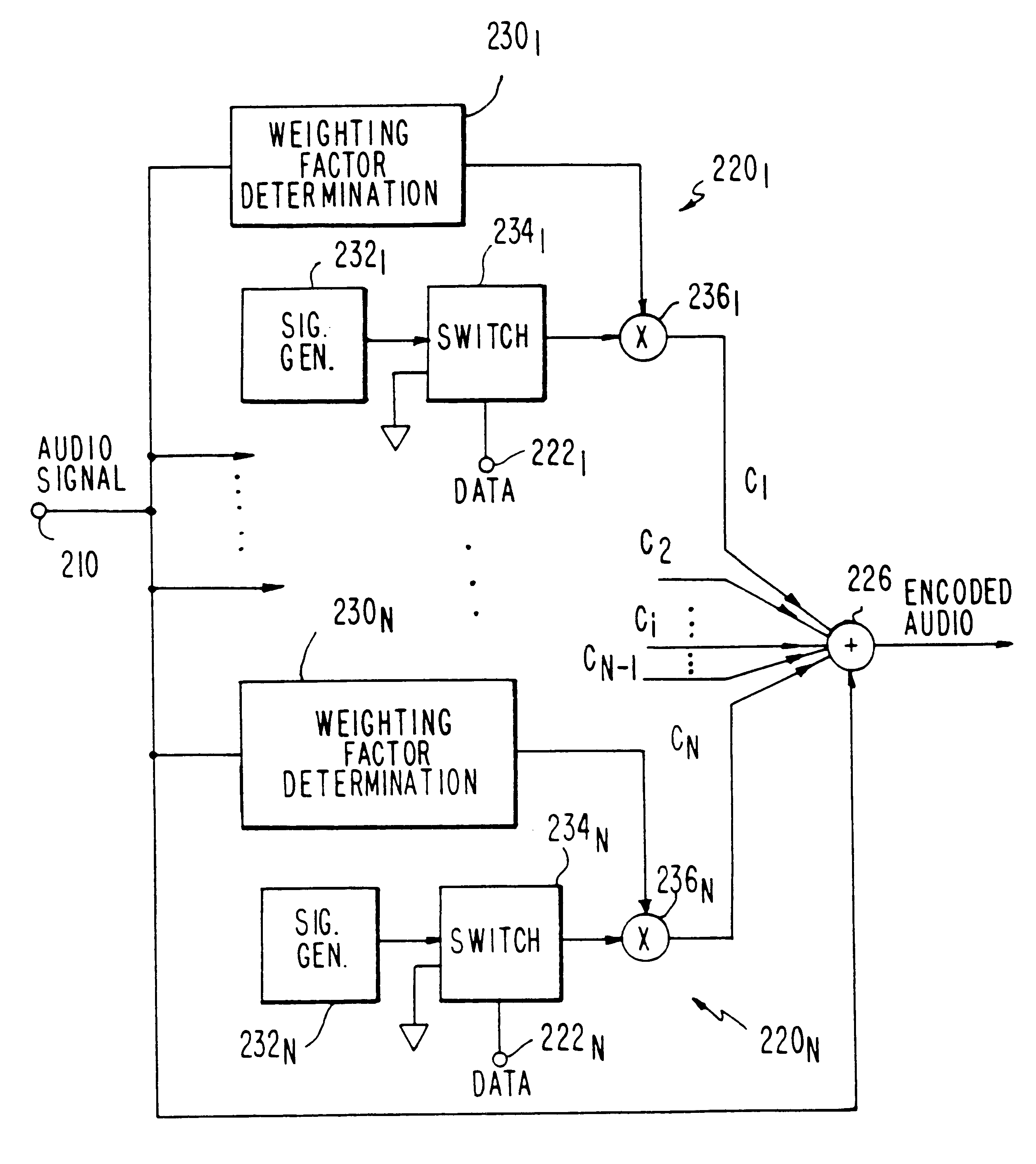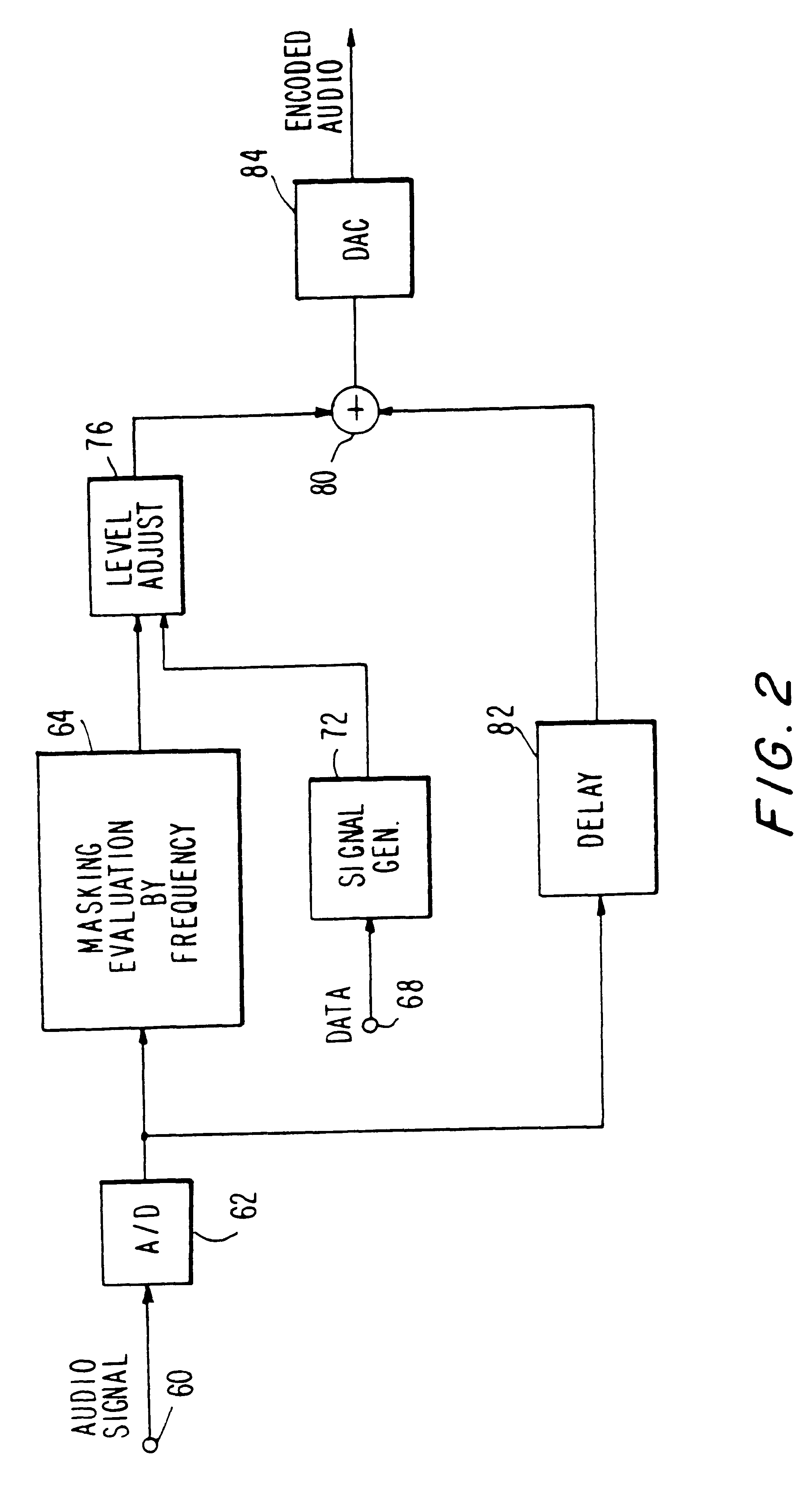Apparatus and methods for including codes in audio signals
a technology of code and audio signal, applied in the field of code and decoding apparatus and methods, can solve the problems of code being obscured, audible, and not tolerating the inclusion of audible codes in programs and recordings, and achieve the effect of reliably recovering codes present in audio signals
- Summary
- Abstract
- Description
- Claims
- Application Information
AI Technical Summary
Benefits of technology
Problems solved by technology
Method used
Image
Examples
Embodiment Construction
Encoding
The present invention implements techniques for including codes in audio signals in order to optimize the probability of accurately recovering the information in the codes from the signals, while ensuring that the codes are inaudible to the human ear when the encoded audio is reproduced as sound ever. if the frequencies of the codes fall within the audible frequency range.
With reference first to FIG. 1, a functional block diagram of an encoder in accordance with an aspect of the present invention is illustrated therein. An audio signal to be encoded is received at an input terminal 30. The audio signal may represent, for example, a program to be broadcast by radio, the audio portion of a television broadcast, or a musical composition or other kind of audio signal to be recorded in some fashion. Moreover, the audio signal may be a private communication, such as a telephone transmission, or a personal recording of some sort. However, these are examples of the applicability of ...
PUM
 Login to View More
Login to View More Abstract
Description
Claims
Application Information
 Login to View More
Login to View More - R&D
- Intellectual Property
- Life Sciences
- Materials
- Tech Scout
- Unparalleled Data Quality
- Higher Quality Content
- 60% Fewer Hallucinations
Browse by: Latest US Patents, China's latest patents, Technical Efficacy Thesaurus, Application Domain, Technology Topic, Popular Technical Reports.
© 2025 PatSnap. All rights reserved.Legal|Privacy policy|Modern Slavery Act Transparency Statement|Sitemap|About US| Contact US: help@patsnap.com



